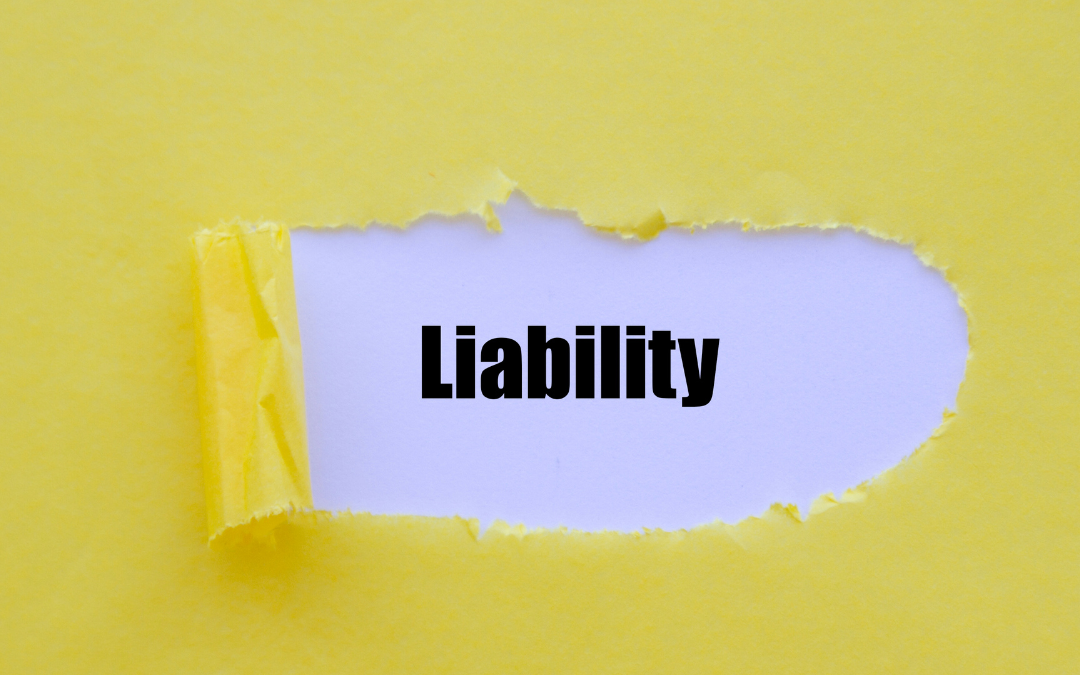Almost every organization faces commercial liability exposures. A commercial liability loss exposure is a condition or situation that presents the possibility of an organization becoming legally and financially responsible for injury, harm, or damage to another party.
These exposures stem from the kind of work an organization performs and where that work is executed. They also encompass other aspects of business-related circumstances, activities, or events that could result in harm to a third party
There are five types of commercial liability exposure that every organization should know. Possible loss exposures that may affect an organization include the following:
- Premises liability—Premises liability describes an organization’s risk if a customer or client is injured on the premises (e.g., tripping and hurting themselves at the store). Organizations that require customers or clients to be physically present, such as retail stores and landlords, are particularly at risk for these losses and may be held liable for bodily injury or property damage.
- Operational liability—Operations liability exposure refers to the possibility that an organization will be held liable because of bodily injury or property damage resulting from their ongoing (as opposed to completed) operations. For example, imagine a contractor working on a client’s home. During the course of their work, an employee from the contractor drops a tool, striking a passerby and causing bodily injury and property damage to the home itself.
- Products liability—Products liability refers to the loss exposure an organization faces due to manufacturing, distributing, or selling an unsafe or defective product. Any organization that makes or sells products is at risk. Associated injuries may occur virtually anywhere in the world once an organization’s products have been manufactured or sold.
- Completed operations liability—The completed operations liability exposure refers to injuries or damages incurred by a third party due to work (including construction work) that has been finished, turned over to the purchaser or client, and/or put to its intended use. For example, an electrical fire caused by faulty wiring at a completed construction project would represent a completed operations exposure for the contractor who completed the work. It should be noted that injuries or damages arising from completed operations can occur after a business’s relationship with the injured party has ended.
- Contractual Liability—Organizations take on contractual liability loss exposures when they enter into a contract. By agreeing to contractual terms, an organization becomes liable if the other parties involved in the contract believe an organization has not fulfilled its obligations under the agreement.
Potential Consequences of Liability Exposures
In the event of a commercial liability loss, organizations can face a variety of potential consequences, such as:
- Damages—If a court deems an organization responsible for a loss, that organization may be held financially accountable for paying damages to the harmed or injured party.
- Defense costs—The organization may have to pay legal defense costs and the costs associated with the claim.
- Reputational harm—Due to general liability losses, organizations may experience reputational harm, including but not limited to the loss of business, decreased employee retention, and a loss of consumer loyalty and investor trust.
Although commercial liability loss exposures are a risk for every organization, the severity of the consequences can be alleviated with proper insurance policies.
Commercial Liability Insurance
No matter how careful an organization is, there will always be risks associated with commercial liability loss exposures. Therefore, the best way to protect an organization is to purchase commercial general liability coverage (CGL).
CGL policies are designed to cover an organization from liability claims for bodily injury and property damage to third parties. CGL policies have three standard coverages:
- Bodily injury and property damage—This coverage protects organizations from the legal liability arising from bodily injury and property damage stemming from an organization’s premises or operations.
- Personal and advertising injury—This aspect of CGL policies protects insureds from liability stemming from accusations of libel, slander, false arrest, copyright infringement, malicious prosecution, theft of advertising ideas, and invasion of privacy.
- Medical payments—Medical payments coverage includes payments for injuries sustained by third partiescaused by an accident at the insured’s premises or the insured’s operations. Unlike bodily injury and property damage coverage, medical payments coverage can be triggered without legal action and is designed to settle smaller, less serious medical claims without litigation.
Conclusion
Consult Bates, Hewett & Floyd for further guidance on how to protect your organization from commercial liability loss exposures.
This Coverage Insights is not intended to be exhaustive nor should any discussion or opinions be construed as legal advice. Readers should contact legal counsel or an insurance professional for appropriate advice. © 2022 Zywave, Inc. All rights reserved.

